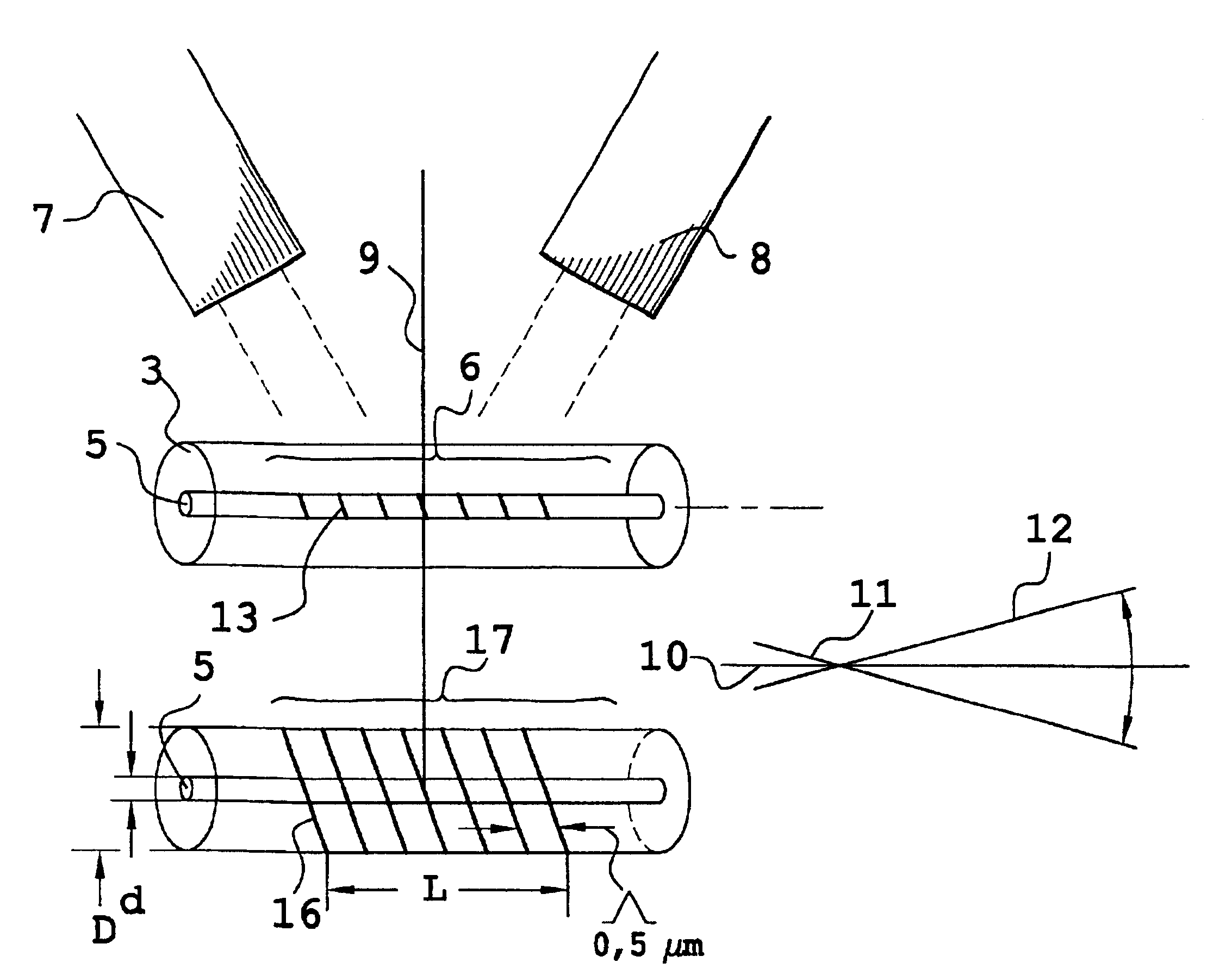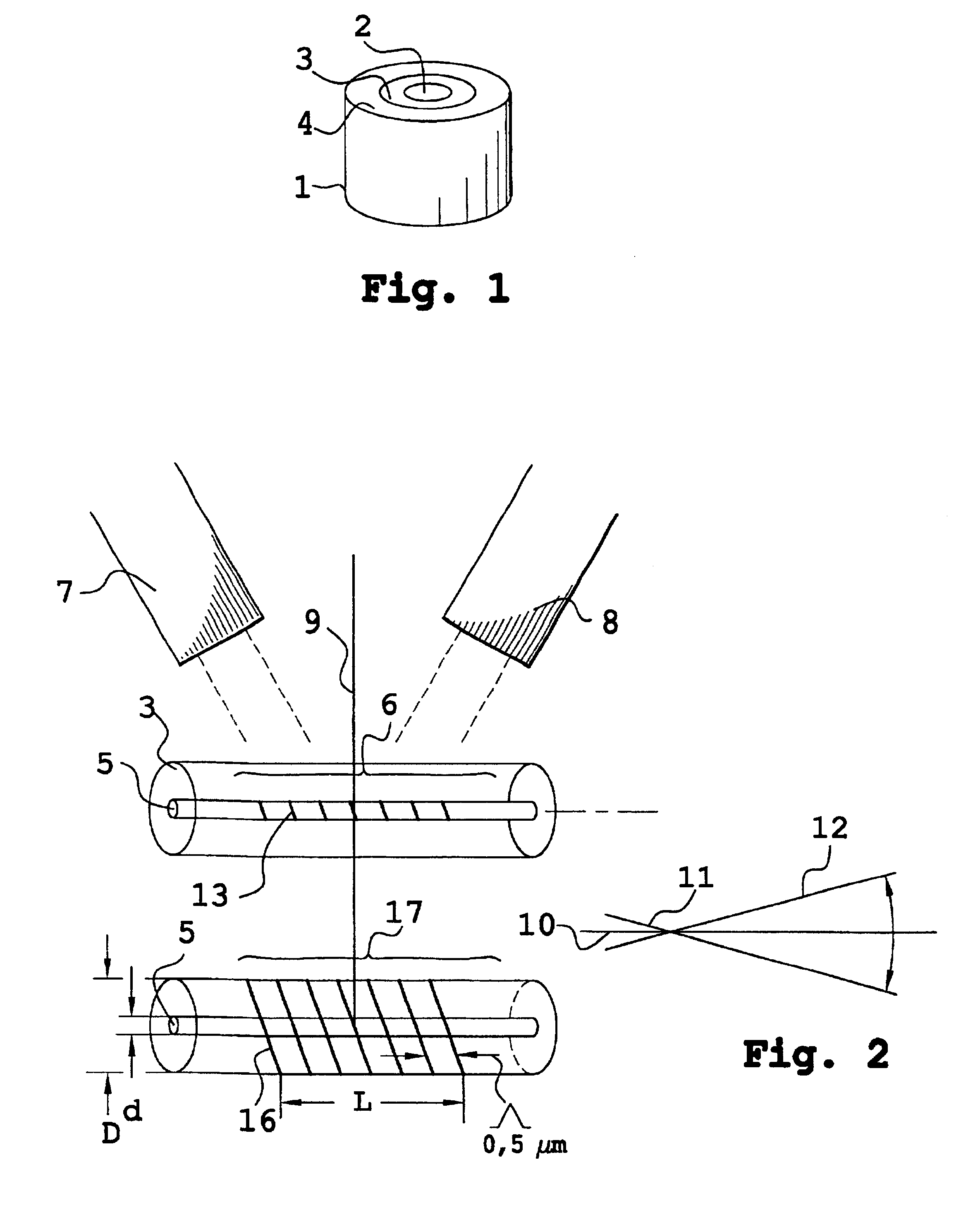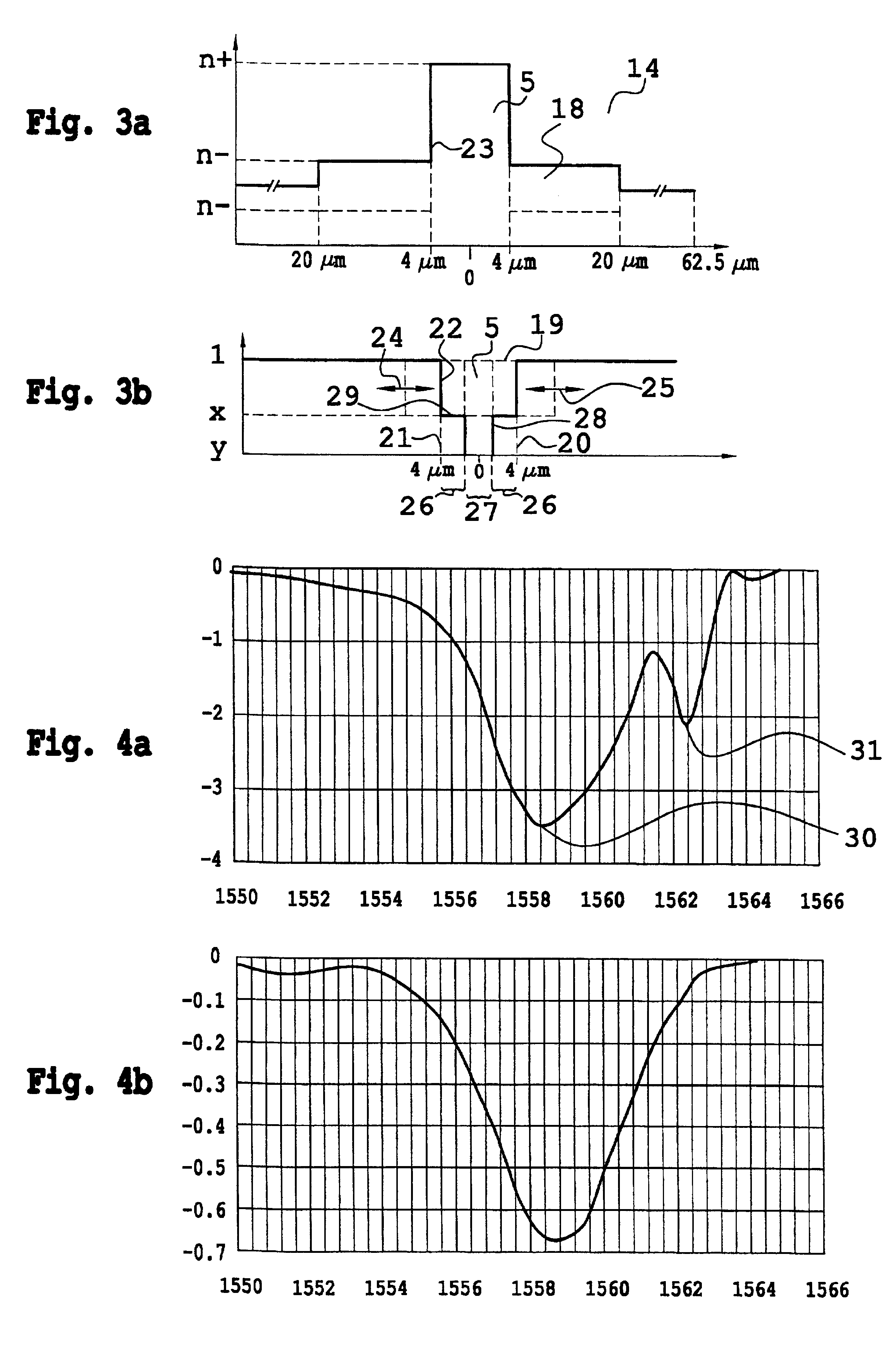Filtering optical fiber having a modified photosensitivity profile
a filtering optical fiber and photosensitivity technology, applied in the direction of optical fibers with multi-layer cores/claddings, optical waveguide light guides, instruments, etc., can solve the problems of systematically favoring certain frequency components within the transmitted band, particularly troublesome phenomena, and reducing photosensitivity, so as to reduce the effect of index grating strength and reducing photosensitivity
- Summary
- Abstract
- Description
- Claims
- Application Information
AI Technical Summary
Benefits of technology
Problems solved by technology
Method used
Image
Examples
Embodiment Construction
FIG. 1 shows an optical fiber preform 1. The perform 1 has a first cylinder surrounded by an inner cylindrical ring and an outer cylindrical ring 4. The cylinder and its rings represent the various layers of material present in the optical fiber after it has been made by drawing. The radial dimensions of the cylinder and cylindrical rings 2 to 4 are in the same proportions as the much smaller dimensions of the corresponding portions in the optical fiber once the fiber has been made by drawing. In practice, a fiber core and cladding corresponding respectively to layers 2 and 3 are each made up from a plurality of layers. The layers 2 to 3 are thus doped with different dopants while the preform is being built up.
FIG. 2 shows a preferred method of exposing a photosensitive material suitable for creating a grating of index changes, also known as an index grating, within the core 5 of a fiber. In a prior art fiber, the core 5 of the fiber is doped with germanium when the cylinder 2 is ma...
PUM
 Login to View More
Login to View More Abstract
Description
Claims
Application Information
 Login to View More
Login to View More - R&D
- Intellectual Property
- Life Sciences
- Materials
- Tech Scout
- Unparalleled Data Quality
- Higher Quality Content
- 60% Fewer Hallucinations
Browse by: Latest US Patents, China's latest patents, Technical Efficacy Thesaurus, Application Domain, Technology Topic, Popular Technical Reports.
© 2025 PatSnap. All rights reserved.Legal|Privacy policy|Modern Slavery Act Transparency Statement|Sitemap|About US| Contact US: help@patsnap.com



